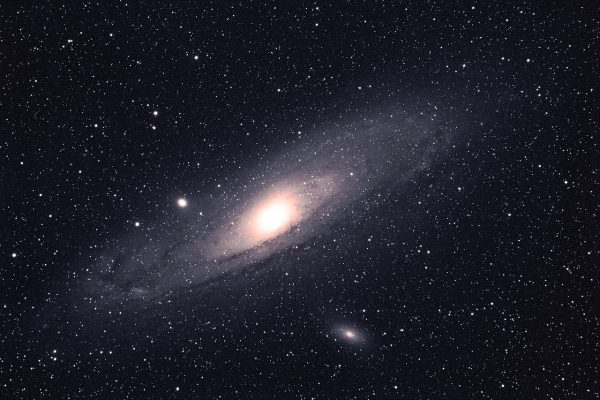
Like most big galaxies, the Milky Way is a cold-blooded cannibal, with a history of gobbling up smaller galaxies in order to maintain its lovely spiral figure. But, a few billion years from now, our cosmic home could meet its match with an equally hungry neighbor called Andromeda.
Andromeda, the nearest large galaxy to ours, is on a crash course to merge with the Milky Way about 4.5 billion years from now. How will the monstrous smash-up change the shapes of the participating galaxies? That’s anyone’s guess. But, given Andromeda’s size, astronomers know our neighbor is no slouch when it comes to playing galactic tug-of-war — and, according to new research published today (Oct. 2) in the journal Nature, Andromeda may have a far more cannibalistic past than scientists gave it credit for.
Using observations from five different telescopes, the study authors observed the diffuse halo of stars at the edge of Andromeda’s orbit and detected at least two clusters of stars with distinct trajectories and velocities that didn’t seem to match each other, or the rest of the galaxy. Based on the estimated ages of these clusters, the team determined they were the remnants of two ancient dwarf galaxies that Andromeda had devoured long ago — one, gobbled up just a few billion years ago, and the other swallowed nearly 10 billion years ago.


